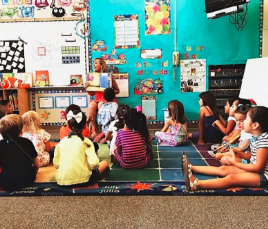In early childhood education, the most lasting lessons often happen outside traditional teaching methods. By incorporating real-life experiences into classroom learning, educators can create more meaningful and memorable moments for young children. These hands-on experiences help children connect what they learn in school with the world around them, deepening their understanding and sparking curiosity.
Why Real-Life Experiences Matter
Young learners thrive when they can relate to what they are learning. When children recognize familiar places, activities, or routines in their lessons, they’re more likely to stay engaged. Real-life connections give abstract ideas meaning, helping children grasp new concepts in a way that feels natural.
For example, a simple trip to the grocery store can support lessons in math, literacy, and social skills. Counting items, identifying letters on signs, and interacting with community members all turn into valuable learning opportunities.
Bringing Everyday Life into the Classroom
You don’t need to plan big outings to make real-life learning happen. Everyday classroom moments can reflect real-world experiences:
-
Pretend Play Stations: Set up a play kitchen, a mini post office, or a pretend doctor’s office to encourage role-play that mirrors daily life.
-
Nature Walks: Explore your school’s outdoor space to talk about weather, plants, or insects—linking science lessons to what children see and touch.
-
Cooking Together: Preparing a simple snack can teach sequencing, counting, and cooperation while building life skills.
-
Family Involvement: Invite parents or caregivers to share their jobs or cultural traditions. This adds variety and deepens children’s awareness of their community.
Encouraging Children to Share Their Stories
Children come to school with a rich background of experiences. Encouraging them to share their own stories—about a birthday celebration, a visit to the park, or a new pet—can become a powerful learning tool. These stories can lead to writing exercises, group discussions, or creative art projects, helping children process and take pride in their experiences.
Benefits Beyond Academics
Using real-life experiences in the classroom also supports emotional growth. It fosters confidence, empathy, and a sense of belonging. Children see that their voices matter and that learning happens everywhere—not just during formal lessons.
Final Thoughts
Integrating real-life experiences into early learning makes education more relatable, engaging, and effective. Whether through simple activities or community connections, bringing everyday moments into the classroom helps children build stronger foundations for lifelong learning.


